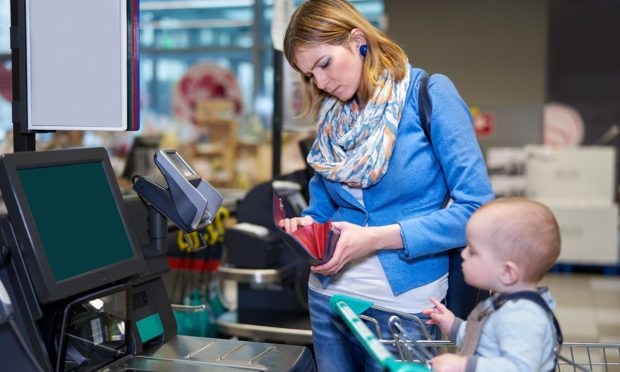
Persistent inflation and increasing prices for essential items, from groceries and utilities to fuel, have left most Americans treading water financially in recent years. And 2023 was no different.
As of November, over 60% of Americans were living paycheck to paycheck, with 20% struggling to pay their monthly bills. It’s a trend that has come to stay, according to Amber Carroll, senior vice president of membership and lifecycle strategy at LendingClub.
“The paycheck-to-paycheck lifestyle is beginning to be the norm,” Carroll told PYMNTS in August, adding that “consumers are adjusting their spending behaviors, but this is allowing them to tread water, not get ahead.”
Data from an ongoing PYMNTS Intelligence series, developed in partnership with LendingClub and currently in its third year, revealed that the paycheck-to-paycheck lifestyle isn’t exclusive to low-income earners; more than 40% of consumers earning over $100,000 also grappled with inflation’s impact in 2023.
When it comes to age demographics, millennials constituted the largest group living paycheck to paycheck, with 73% in this situation. While this percentage has remained constant in a year-to-year comparison, there was a surge in the share of Generation Z living paycheck to paycheck. However, the percentage of baby boomers and seniors in a similar situation stabilized after a spike in the first months of 2022.
This trend also reflected regionally, with nearly 70% of urban residents living paycheck to paycheck this year, compared to 63% in rural areas and 55% in suburban areas.
The financial strain intensified due to unforeseen expenses, affecting nearly half of American consumers with unplanned costs between April and May. As noted in “The Emergency Spending Deep Dive Edition,” around two-thirds of these unexpected expenses surpassed the Federal Reserve’s $400 benchmark.
While savings typically act as a buffer against these unexpected costs, PYMNTS data indicated that more than 30% of consumers depleted their savings primarily due to emergency spending, with job loss or income reductions following at 20%.
Additionally, among all surveyed consumers, nearly 80% recalled experiencing an expense that led to them withdrawing a portion of their savings, with bridge millennials being the most impacted group. This percentage rose to 90% among individuals living paycheck to paycheck who encounter difficulties in paying their bills.
As the challenging economic landscape weakened consumer purchasing power during the year, more households allocated a greater share of their budget to essential expenses instead of discretionary ones.
The shift became more pronounced as over 20% of paycheck-to-paycheck consumers identified nonessential spending as contributing to their financial strain. Specifically, nearly a third of Generation Z individuals attributed their paycheck-to-paycheck situation to nonessential expenditures.
As Carrol noted in a separate PYMNTS interview in September: “if we were to translate those numbers to the broader market, that would mean that 13% of adults are saying that nonessential spend is causing them to live paycheck to paycheck.”
However, despite living paycheck to paycheck, two-thirds of individuals occasionally indulged in nonessential purchases while shopping. Among these spenders, credit card use was 20% higher than those abstaining from such expenses. Carroll highlighted the need for a reassessment of these transactions, especially during high-spending periods like the holidays.
Fewer consumers planned to partake in holiday shopping compared to the prior year, suggesting a more cautious spending attitude influenced by evolving economic conditions. Specifically, only 20% of shoppers foresaw increased spending, primarily attributing this projection to elevated prices, as revealed in “The Holiday Shopping Deep Dive Edition.”
Meanwhile, to navigate their lower purchasing power, individuals relied on side jobs and alternative income streams in 2023. Half of employed consumers reported having supplemental income sources in addition to their paychecks. Specifically, among those living paycheck to paycheck, 35% of those who struggled to pay bills had an extra source of income, as well as 33% of those without such struggles. Both these figures surpassed the overall average of 29% across the board.
2023 served as a pivotal marker in reshaping consumer financial behavior. The challenges of living paycheck to paycheck and navigating unexpected expenses sparked a reevaluation of spending habits and financial priorities.
As we venture into the new year, the lessons learned from this period of economic strain are poised to redefine how individuals approach their finances. A heightened awareness of the impact of emergency expenses on savings and the recognition of nonessential spending as a contributor to financial pressure will likely prompt a shift in consumer behavior.
The evolving landscape may see individuals actively seeking strategies to bolster financial resilience. This might involve a concerted effort to build emergency funds, opt out of credit cards, embrace budgeting techniques and explore alternative income streams. Additionally, there’s a potential for a more restrained approach to spending, as consumers become more selective in their discretionary purchases and prioritize essential expenses.
Ultimately, the lessons gleaned from the financial trials of 2023 are positioned to guide individuals toward more prudent, resilient and forward-thinking financial practices in the coming year and beyond.